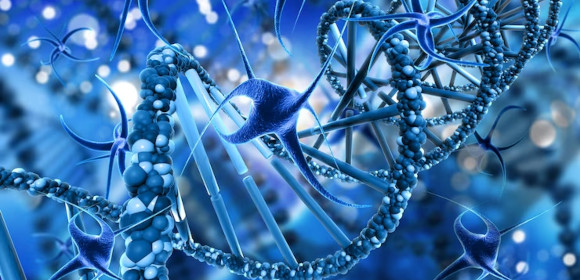What is teratogenicity?
The study of genetic variations
The impact of drugs on pregnancy
The study of birth defects caused by environmental factors
The effect of diet on prenatal development


Everything in this world is up to chance, and this includes the way one’s child will grow up in the world. The occurrence of birth defects is very hard to eliminate, so instead, people have focused on reducing the risk as much as possible.
Teratogenicity refers to both the father’s and mother’s ability to create a child or an offspring with a birth defect or disability. This can be caused by both internal and external factors like emotional health, physical health, stress, and consumption of specific objects. If you want to learn more about teratogenicity, you may read articles named Medicinal Plants with Teratogenic Potential, Misoprostol and Teratogenicity, Teratogenic Inborn Errors of Metabolism, and Studies on Teratogenicity of Food Additives on the links above.
Childbirth is both a dangerous and taxing process that will alter the lives of all the people in the situation. To ensure that the child will grow up healthily and the mother will not be at risk, it is best to reduce or minimize the rate of teratogenicity that will occur during the pregnancy.
One of the best ways to minimize teratogenicity is to avoid teratogens entirely. This means that if the person is highly addicted to a specific teratogen like cigarettes and alcohol, they must try to stop or control their consumption during the pregnancy.
Another way to decrease the risk is to see a healthcare provider or practitioner that can do various methods of teratogenicity testing. This means that if the would-be mother is planning for a child they must see a healthcare provider to get a teratogenicity test to check the risk.
Diabetes and other sicknesses or conditions increase the chances of a birth defect and may induce a high-risk pregnancy. This means that the would-be mother should do their best to exercise and improve their Body Mass Index or BMI to a healthy level.
When the body does not have enough nutrition and vitamins, there is a higher chance of a birth defect occurring during childbirth. This means that both would-be parents should drink vitamins and improve their overall nutritional status.
Tetrogens are ingested objects that can increase the possibility of teratogenicity occurring in the pregnancy, which will result in a birth defect occurring in a child. There are many real-life examples of tetrogens a lot of people can encounter in their everyday life. One of these common examples is in the form of a cigarette that both acts as a carcinogen and a teratogen. Another common example of a teratogen is in the form of alcoholic beverages and liquors that will both inebriate the parent and increase the chances of teratogenicity in a child. One of the most dangerous forms of a teratogen is cocaine, which is considered an illegal drug or substance.
Teratogenic risk is the risk of a birth defect in the child and the chance of miscarriage that is highly associated with childbirth. Some expecting mothers have higher teratogenic risks when they will give birth, which is due to the substances ingested by the mother, mutations within their genetics, and other inherited traits from their parents. Not only that but children created due to an incestuous relationship have a higher teratogenic risk than most children.
There are many common signs of a high-risk pregnancy. A medical issue that existed bee to becoming pregnant might occasionally cause a high-risk pregnancy. In some cases, a medical condition that develops while you or your unborn child are pregnant might make a pregnancy high risk. There are risks connected to several pregnancy issues. Examples include an abnormal placenta position and fetal development that is below the gestational age 10th percentile (fetal growth restriction). Additionally, a pregnancy may be in danger due to the parents’ lifestyle choices, such as consuming alcohol, smoking cigarettes, and using illicit substances.
Teratogenicity is a quality used in childbirth that refers to the associated risk of a birth defect in the child and the risk posed to the mother during pregnancy and childbirth. There are many ways to reduce teratogenicity and help ensure that the child is delivered safely and will grow up as a healthy adult.
Text prompt
Add Tone
10 Examples of Public speaking
20 Examples of Gas lighting
What is teratogenicity?
The study of genetic variations
The impact of drugs on pregnancy
The study of birth defects caused by environmental factors
The effect of diet on prenatal development
Which of the following is a common teratogen that can affect fetal development?
Folic acid
Vitamin D
Alcohol
Iron supplements
What is the critical period for teratogenic effects?
The entire pregnancy
The first trimester only
The second and third trimesters
The preconception period
Which drug category is known for having potential teratogenic effects?
Antihistamines
Antihypertensives
Antiepileptics
Antacids
How can teratogenic effects be minimized during pregnancy?
By avoiding all medications
By taking prenatal vitamins
By avoiding known teratogens and following medical advice
By increasing calorie intake
What type of defect is commonly associated with exposure to the drug thalidomide during pregnancy?
Neural tube defects
Limb deformi
Heart defects
Cleft palate
Which of the following is a known teratogen that can cause neural tube defects?
Cocaine
Methadone
Vitamin A in excess
Tobacco
What type of study is most commonly used to identify teratogenic effects of substances?
Cross-sectional study
Case-control study
Randomized controlled trial
Cohort study
Which maternal condition is known to increase the risk of teratogenic effects?
Diabetes
Asthma
Hyperthyroidism
Hypertension
Which of the following is NOT a typical method for assessing the teratogenic potential of a substance?
Animal testing
Clinical trials
Genetic screening
Epidemiological studies
Before you leave, take our quick quiz to enhance your learning!

